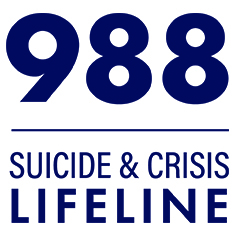Suicide in the Middle Years
July 08, 2013

In May, researchers from the CDC’s National Center for Injury Prevention and Control reported that “the annual, age-adjusted suicide rate among persons aged 35-64 years increased 28.4 percent, from 13.7 per 100,000 population in 1999 to 17.6 in 2010.” The large increase in the suicide rate of those in the middle years contrasted sharply with the relatively small increases in rates among people 10-34 years and over age 65. The rate for men in the middle years rose 27.3 percent, slightly less than the 31.5 percent increase among women.
In truth, we have not devoted the same energy and resources preventing suicide among people in the middle years that we have to preventing suicide among other populations. We have invested in preventing suicide among youth through the Garrett Lee Smith Memorial Act. We have invested in preventing suicide among older adults through Medicare and legislated parity in coverage for mental health care. And we have devoted much attention to suicide among veterans and the men and women who serve on active duty in the military.
While many of the same risk factors contribute to suicide in the middle years and among people in other age groups, the context of this risk can be different. We recognize youth and old age as periods of transition. We have created prevention programs to help people cope with these transitions. People in the middle years also face transitions that can elevate the risk of suicide. Long-term marriages may dissolve. People who thought they were entering a period of financial stability may be faced with hardship brought about by unemployment, foreclosure, or other unanticipated events. Depression and the abuse of drugs and alcohol also play a major role in suicidal behavior among the middle-aged. Yet, as both the revised National Strategy for Suicide Prevention and a recent article by Eric Caine in the American Journal of Public Health point out, the field of suicide prevention has yet to focus on preventive measures specific to those in the middle years.
The Injury Control Research Center for Suicide Prevention (http://www.suicideprevention-icrc-s.org) recently hosted a meeting to consider how to better reach vulnerable persons in the middle years. It is essential to look beyond traditional clinical settings and engage those at risk in the settings where they are most likely to be found – courts, social service agencies, places of employment, and union halls. We in the field of suicide prevention should, for example, strengthen our efforts to work with employee assistance programs. We also must find ways of reaching people in the middle years during major life transitions or crises and interrupt what could otherwise become a fatal trajectory.
References
Caine, E. (2013). Forging an agenda for suicide prevention in the United States.
American Journal of Public Health, 103(5):822-829.
Centers for Disease Control and Prevention (CDC). (2013). Suicide among adults aged 35-64 years–United States, 1999-2010. MMWR. Morbidity and Mortality Weekly Report, 62(17), 321-325.
